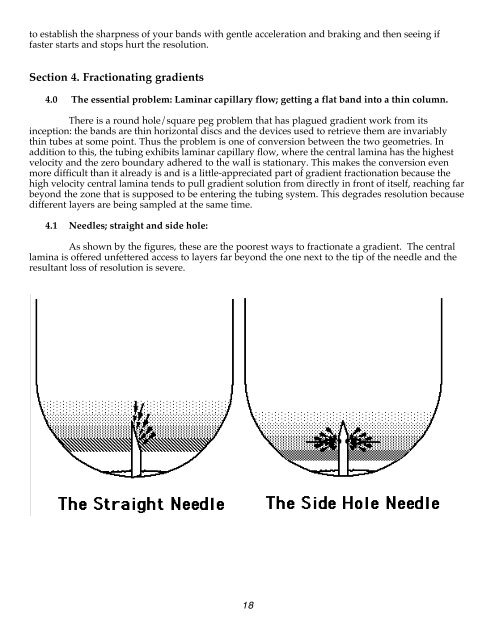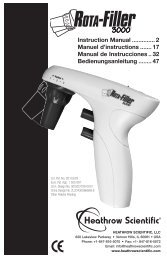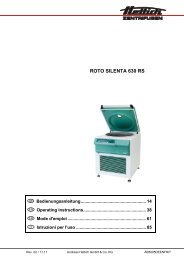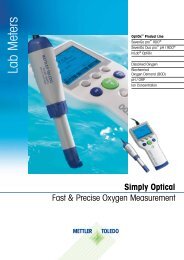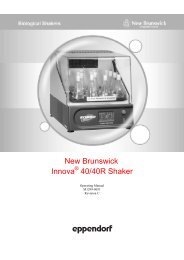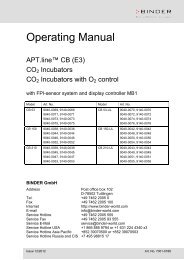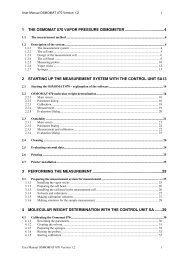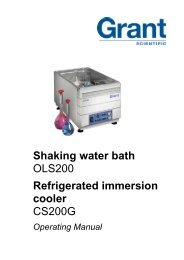Gradient Master - Wolf Laboratories
Gradient Master - Wolf Laboratories
Gradient Master - Wolf Laboratories
You also want an ePaper? Increase the reach of your titles
YUMPU automatically turns print PDFs into web optimized ePapers that Google loves.
to establish the sharpness of your bands with gentle acceleration and braking and then seeing if<br />
faster starts and stops hurt the resolution.<br />
Section 4. Fractionating gradients<br />
4.0 The essential problem: Laminar capillary flow; getting a flat band into a thin column.<br />
There is a round hole/square peg problem that has plagued gradient work from its<br />
inception: the bands are thin horizontal discs and the devices used to retrieve them are invariably<br />
thin tubes at some point. Thus the problem is one of conversion between the two geometries. In<br />
addition to this, the tubing exhibits laminar capillary flow, where the central lamina has the highest<br />
velocity and the zero boundary adhered to the wall is stationary. This makes the conversion even<br />
more difficult than it already is and is a little-appreciated part of gradient fractionation because the<br />
high velocity central lamina tends to pull gradient solution from directly in front of itself, reaching far<br />
beyond the zone that is supposed to be entering the tubing system. This degrades resolution because<br />
different layers are being sampled at the same time.<br />
4.1 Needles; straight and side hole:<br />
As shown by the figures, these are the poorest ways to fractionate a gradient. The central<br />
lamina is offered unfettered access to layers far beyond the one next to the tip of the needle and the<br />
resultant loss of resolution is severe.<br />
18


